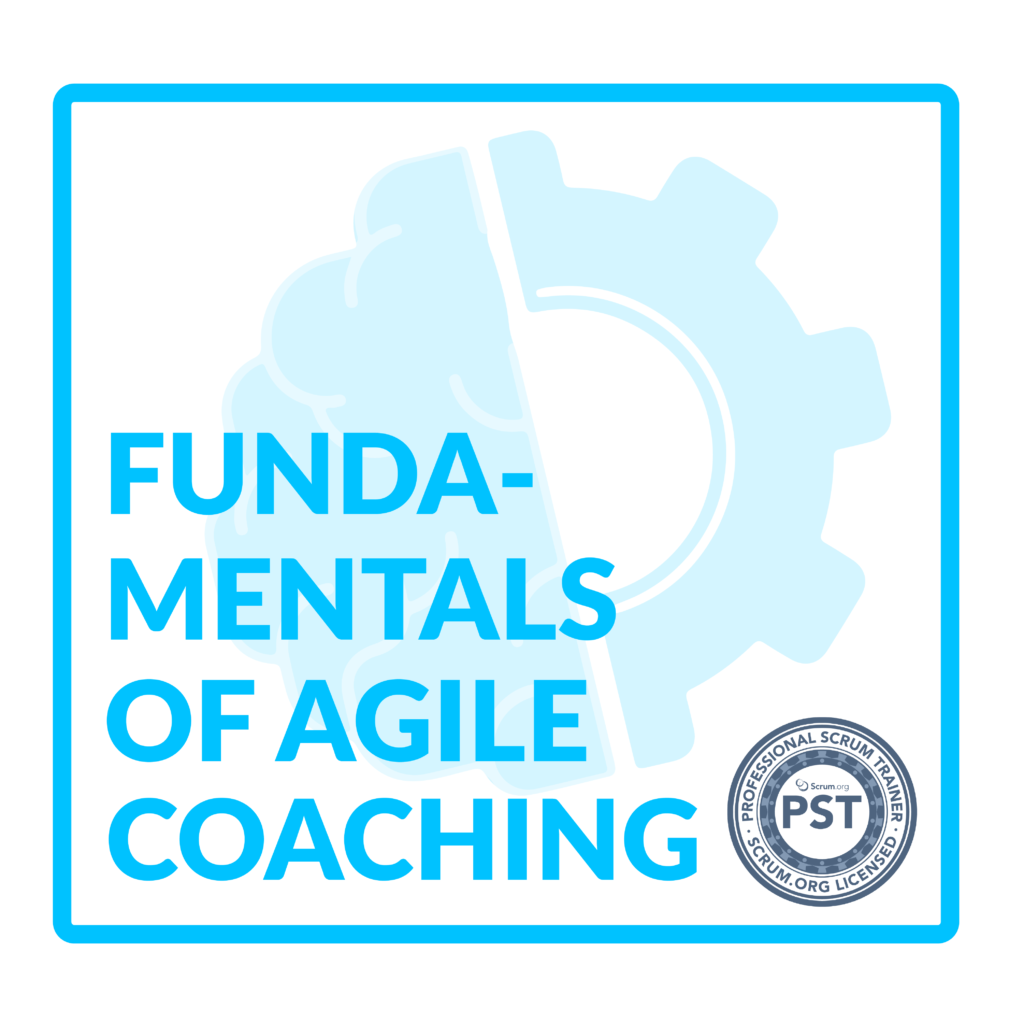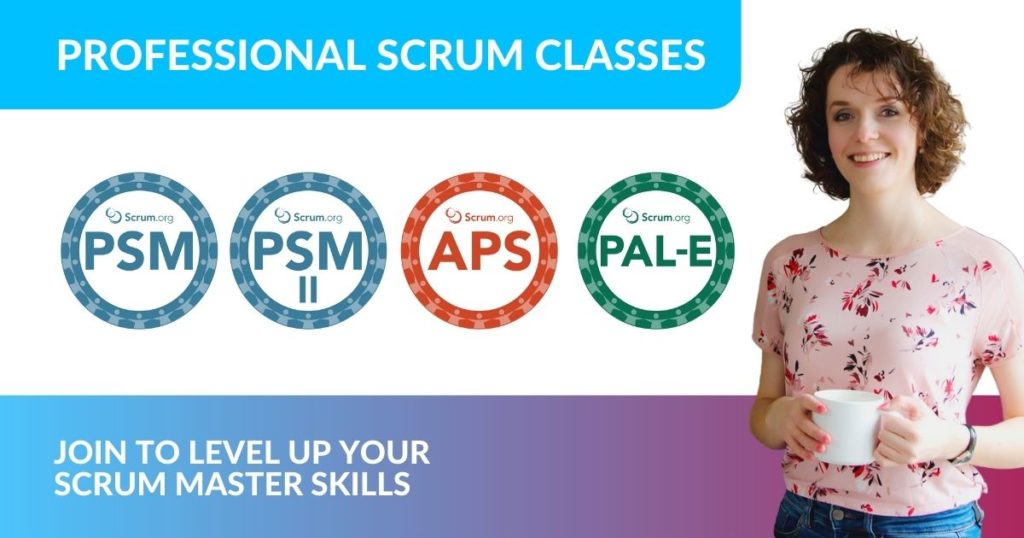If you are looking to become a Scrum Master, your first step would most likely be getting one of the Scrum certifications. As a Professional Scrum Trainer with Scrum.org I passed all three levels of the PSM assessments, and I’d like to give you some tips on how to do the same. My focus will be on Scrum.org, obviously, as this is my certification provider of choice.
Watch the video 🎥 below for more information!
Now, let’s get things straight: I will not be giving you answers to any exam questions, or specific preparation tips for each type of exam. Yes, PSM I certification is quite different from PSM II or PSM III exams.
What I will give you is advice that will help you not only pass the exam but become a better Scrum Master or Scrum practitioner. This will help you elevate your understanding of the framework and learn more continuously.
With continuous learning and profound understanding of the underlying concepts, you will be able to go from PSM I to PSM III level, I am sure of it.
Looking for Scrum certification training?
Check out my schedule for public Professional Scrum classes. Scrum.org provides the highest quality Scrum training, training materials and certified Professional Scrum Trainers (PSTs) to teach them. It is one of the best ways to learn and prepare for your exams.
The most important Scrum certification preparation advice
So let’s start with my most important message, my main study advice for you:
Always focus on the underlying principles and pillars of Scrum, what it teaches us about values and behaviours rather than elements involved, what is the end goal of Scrum rather than the steps of getting there.
Scrum is a framework that is based on empiricism which tells us that we only know what has already happened and what we have already experienced and decisions must be made based on what is known.
Here is a quote for you to help you remember: “Prediction is very difficult, especially about the future” by Niels Bohr, a Danish physicist.
The pillars of empiricism are transparency, inspection and adaptation. Everything in Scrum is designed to serve and support those pillars.
Whenever you are unsure about a role, an event or an artifact, ask yourself: how that element is connected to the pillars of empiricism?
In addition, review the Scrum values. While the Scrum Guide only has a short paragraph that covers it, values are extremely important.
Think about what kind of behaviours the pillars of empiricism and Scrum values encourage and discourage. How does this affect the way people work? I highly encourage you to read this article by the Scrum caretaker Gunther Verheyen.
For every element of Scrum, ask yourself: why is this important? What would happen if it wasn’t there? Once again, think back to empiricism.
Study online at your own pace to get the foundational knowledge of Agile and Scrum
Can’t attend in-person training? Join this new online course coming soon to get the baseline knowledge you need to succeed and even coach others!

The Scrum Guide has all the answers to your pressing PSM exam questions
Let’s also talk about the Scrum Guide itself and how you should treat it in your Scrum learning.
The Scrum Guide holds all the truth and all information that you need about Scrum.
Let me highlight it again so it sticks: The Scrum Guide holds ALL the truth and ALL information that you need about Scrum.
Now let me tell you about my journey to explain it better. When I first read the Scrum Guide, I found it to be very light and not contain enough information for me to understand it. Then for years I was looking for other ways to learn more about Scrum: articles, books, videos – and whenever someone would say – Scrum has all the answers, I felt that it was not true. I needed something else to understand better.
Don’t make the same mistake I did.
All the answers are indeed in the Scrum Guide, you just need to read it more carefully. And just read it more. And then read it one more time after that. Because every time you read it with the right intent, you will learn something new.
Whenever you have a question about something, first look at what the Scrum Guide has to say about it and do not interpret it – take it as is. And if the Scrum Guide doesn’t say anything about the topic, it means that the Scrum Guide doesn’t have any rules related to that. And if there are no rules related to that defined in Scrum, it is up to you, your team and your organization to find a practice that will work.
Resources to help you prepare for your Professional Scrum Master (PSM) certification
I guess I have given you more questions than answers. So as promised, I would like to share my go-to places to learn more about Scrum.
Disclaimer: This is my genuine advice. Some of the links are affiliate links, so I might earn a small commission if you decide to make a purchase.
Whenever I have a question, I usually go to scrum.org first. The information there is not only vast but also verified by the Scrum trainers, so you can be sure that you are getting it right. Best places to start are the forum and the resources pages.
I also recommend going to the blog of Gunther Verheyen where you can find some essential insights into Scrum.
As for books, here are a couple I would especially recommend:
- Scrum: A Pocket Guide by Gunther Verheyen (on amazon.ca);
- Professional Product Owner guide (on amazon.ca);
- Mastering Professional Scrum (on amazon.ca)
How well do you actually know Scrum?
Test you Scrum knowledge to see if you are ready for a PSM assessment with my True-or-False quiz.
IMPORTANT: whenever you find information regarding Scrum online, be careful. There are many misunderstandings about Scrum being spread. So make sure you only listen to recognized professionals in the industry.
While this is not a comprehensive guide for how to pass the exam with all the answers (and I hope there is none like that!), I believe that if you truly want to learn, this advice will be extremely helpful for you to take on the next step towards Scrum mastery.
And, no, I am not trying to hide some magic-bullet guide to passing PSM certification exams, because there is none. And, yes, I used only the resources provided in this article and my experience as a Scrum Master to pass my PSM III at 96.4%.
If you are looking for a way to introduce your team to Scrum, I recommend watching my video “How to introduce a team to Scrum” where I show some great exercises and posters to use.
Do you have other questions? Or would you like to share other tips and tricks to pass PSM certification exams? Share them in the comments. 👇




